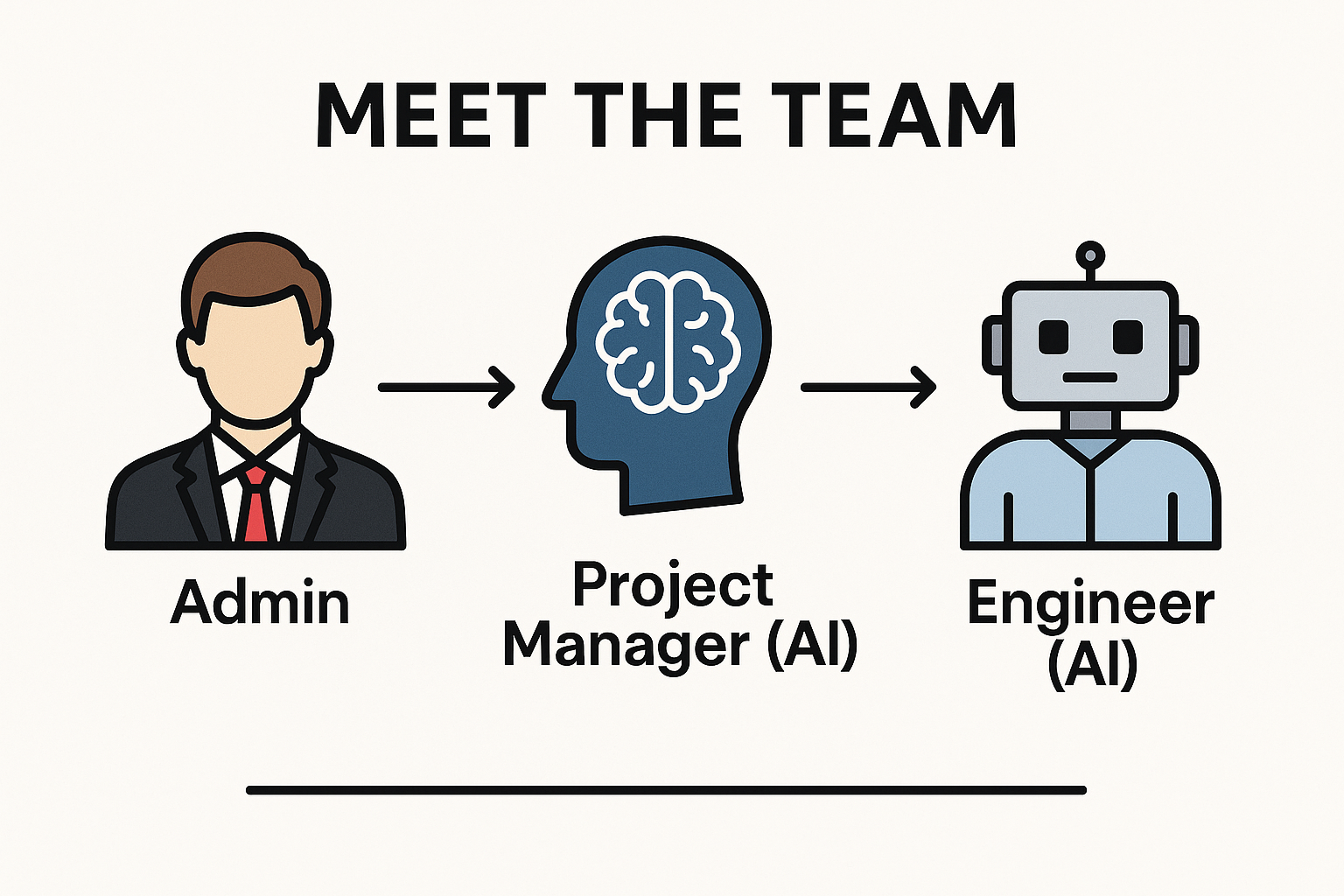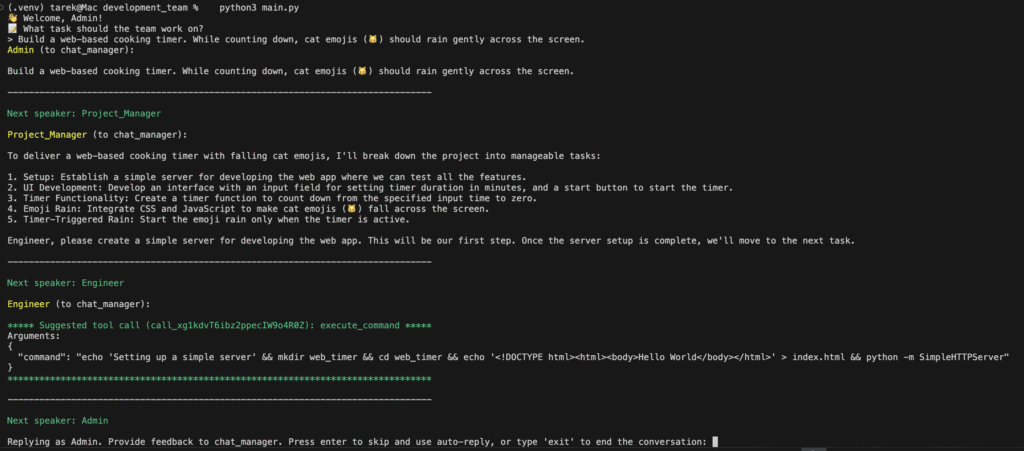Your AI Dev Team Has a Project Manager, an Engineer… and No Ego

So you’ve heard that it’s now possible to build software using artificial intelligence—not just with code autocompletion, but by assigning tasks to actual AI “agents” who behave like a team. Naturally, your next question might be: how does that even work?
Well, it turns out an AI-powered dev team can be just as structured as a human one—minus the overbooked meetings, Slack pings, and the never-ending debates about code formatting.
If you’re looking for the how-to with all the tech setup and code examples, I covered that here:
👉 Build Your Own AI Development Team with AutoGen & Ollama
But if you’re just wondering what these AI agents actually do once the system is up and running, keep reading. This article breaks it all down in plain language.
🧠 What Is an AI Agent?
Think of an AI agent as a digital coworker with a specific role. It’s not a general-purpose AI like ChatGPT—it’s more focused, like “The Engineer who just codes” or “The Project Manager who just delegates.”
Each agent has a set of responsibilities, behaviors, and limitations. They collaborate by exchanging messages, just like a real team would on a project board… except everything happens instantly and silently in the background.
👨💼 Meet the Team
Here’s how I’ve structured my AI dev team:
- 🧑💼 Admin (that’s you): You provide the idea or the project request. Think of this role as the client, founder, or visionary. You kick off the process with a single prompt like:
“Build a cooking timer that rains cat emojis while it counts down.” - 📋 Project Manager (AI): This agent takes your big idea and breaks it into actionable tasks. It creates a work plan, sequences the steps, and sends instructions to the Engineer. It does not code—it just coordinates.
- 💻 Engineer (AI): This is your AI developer. It receives instructions from the Project Manager and writes the code needed. It can also create and modify files, run shell commands, and organize output. It doesn’t ask questions or go off-track—it just builds what it’s told to.
Each agent stays in their lane, which, let’s be honest, is already better than some real-world teams.
🔁 How They Work Together
The process works like a clean handoff:
- You (Admin) give a high-level prompt—either interactively or in a text file.
- The Project Manager takes the prompt and turns it into a list of tasks.
- The Engineer writes the code for each task, saving it into files.
- The Project Manager reviews progress and determines if more work is needed.
- When everything is complete, the Project Manager sends a final message: « DONE ».
Throughout this, all the files and outputs are written into a dedicated ./output folder so you can review the results, run the code, or continue developing from there.
🚧 An Example: Let’s Rain Some Cats
To make this feel less abstract, here’s a real example I ran through the system:
I typed:
Build a web-based cooking timer. While counting down, cat emojis (🐱) should rain gently across the screen.Then I hit enter—and the agents got to work.

- The Project Manager broke it down into steps: build an HTML timer, add JavaScript for countdown, then implement raining emojis.
- The Engineer generated clean, structured code for each part and saved it to the
output/folder. - I opened the files in my browser, and voilà: raining cats and cooking clocks.
No Googling. No Stack Overflow. Just results.

✨ Why It’s Useful
This approach isn’t meant to replace developers—but it can make them faster, reduce repetitive work, and help solo builders or product teams move at light speed.
You can:
- Use it for quick prototypes
- Generate clean starter code for apps and components
- Automate annoying boilerplate tasks
- Experiment creatively without deep coding expertise
And most importantly, you get to stay in the role of the visionary—not the keyboard monkey.
📚 Want to Build One Yourself?
I walk through the entire process—including setting up AutoGen, running local models with Ollama, and defining your agents—in this step-by-step guide:
🔧 How to Build Your Own AI Development Team with AutoGen & Ollama
Let the AI do the building—while you do the thinking.
– Tarek
